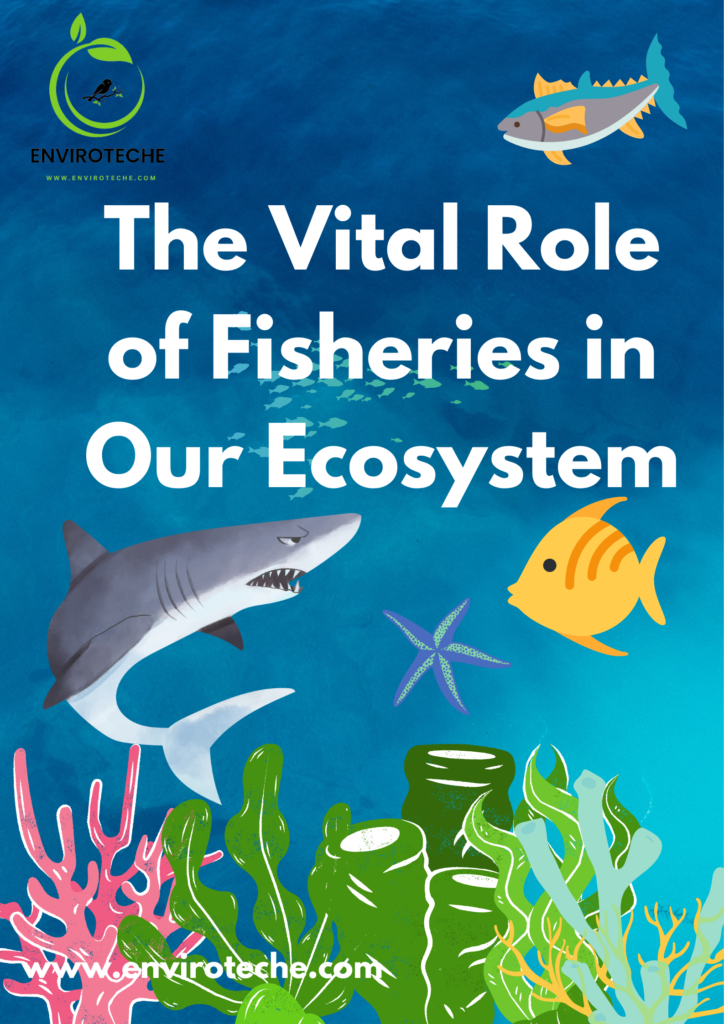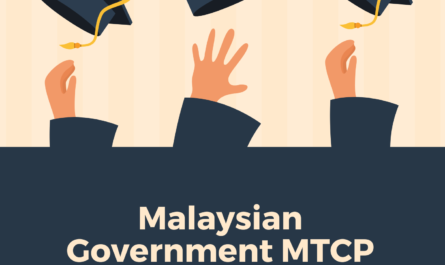
The Vital Role of Fisheries in Our Ecosystem
Affifa Naseer1
1Department of Zoology, University of Agriculture Faisalabad
Introduction:
Our worldwide food system depends heavily on the fishing industry, which gives millions of people a significant supply of protein and a means of subsistence (Hajer et al., 2016). Overfishing, habitat degradation, and falling fish populations are just a few of the serious issues brought on by the rising demand for fish and unsustainable fishing methods. We will go into the idea of sustainable fisheries and examine the steps being taken to guarantee the long-term productivity and health of our oceans in this blog article.
Understanding and importance of Sustainable Fisheries:
In order to preserve the long-term survival of fisheries along with other aquatic resources while minimizing adverse effects on the marine ecosystem, sustainable fisheries are managed and harvested (Thornton et al., 2015). The idea of sustainability in fisheries acknowledges the significance of sustaining the entire biodiversity and ecological harmony in marine ecosystems, as well as maintaining the productivity and health of fish populations. The development and application of fishing laws and regulations is a crucial component of sustainable fisheries. These actions are intended to avoid overfishing, which happens when fishing activity exceeds the capacity of fish populations to repopulate. Overfishing can cause fish stocks to be depleted, upsetting the delicate harmony of marine ecosystems and having an adverse economic and social impact on fishing communities (Sumaila et al., 2020). In order to maintain the long-term viability and health of our seas and the world’s food supply, sustainable fisheries are essential. It is crucial to manage fisheries in a sustainable way to prevent overfishing and the depletion of fish populations given the world’s rising population and demand for seafood. The need for sustainable fisheries for ensuring food security is one of their main justifications. For millions of people around the world, particularly in coastal towns and developing nations, fish is an important source of protein. We can maintain a consistent and stable supply of fish by regulating fisheries sustainably, boosting local businesses, and offering disadvantaged populations a nourishing food source. Additionally, sustainable fisheries contribute to preserving the ecological stability of maritime habitats. In marine food webs, fish play a crucial role as both predators and prey. These delicate relationships can be hampered by overfishing, which can have detrimental effects on other marine species as well as the collapse of fish populations. We can safeguard biodiversity and uphold the general well-being of marine ecosystems by putting into practice sustainable fishing techniques, such as establishing catch limits and employing selective fishing gear (Lynch et al., 2020).
Key Challenges Facing Fisheries:
- Overfishing:
When fish are taken from the ocean to an extent that exceeds their capacity for reproduction and population replenishment, overfishing takes place. It is a widespread issue in numerous fisheries all over the world. Fish stocks are depleted as a result of overfishing, which also disturbs marine ecosystems and jeopardizes fisheries’ long-term sustainability. Excessive fishing efforts, ineffective management and enforcement of fisheries laws, and illicit, unreported, and unregulated (IUU) fishing practices are all factors that contribute to overfishing (Sumaila et al., 2020).
- Habitat degradation and loss:
Fisheries face considerable obstacles as a result of the destruction and loss of maritime habitats. Important habitats including coral reefs, seagrass beds, and mangrove forests are impacted by human activities like bottom trawling, development of coastal areas, pollution, and climate change. Many fish species use these ecosystems as spawning grounds, larval homes, and eating grounds. When these habitats are harmed or destroyed, it alters the life cycles of fish, decreases their diversity and abundance, and has a negative impact on fisheries.
- Climate change:
Globally, fisheries are facing a serious threat from climate change. The distribution, productivity, and behavior of fish species are influenced by changes in ocean currents, rising sea temperatures, the acidity of the ocean, and sea level rise. Some species may migrate, affecting existing fishing grounds and causing disputes amongst fishing groups. Storms and hurricanes, which can harm fishing equipment and impede fishing operations, are becoming more frequent and intense as a result of climate change. To maintain the resilience of fisheries in the midst of climate change, adaptation to these changes and the development of sustainable management strategies are essential.
Strategies for Sustainable Fisheries Management:
- Implementing Science-Based Fisheries Management:
To establish sustainable fishing limits, science-based methods rely on precise data gathering, stock assessments, and research. These techniques aid in ensuring that fishing operations are carried out within the bounds of maximum sustainable yield (MSY), which helps to prevent overfishing and promotes natural fish stock replenishment.
- Setting Fishing Quotas and Limits:
To stop overfishing, fishing quotas and limitations must be established. The total authorized catch (TAC), which allows a set number of fish that can be collected each year, can serve as the basis for quotas. Along with the condition of the fish stocks, these restrictions ought to take ecological, economic, and societal considerations into account.
- Implementing Gear and Fishing Method Regulations:
The effects of various fishing techniques and gear on target species and marine environments might vary. Bycatch (unintended capture of non-target species) can be minimized and habitat harm can be decreased by putting laws in place that encourage the use of selective and sustainable fishing gear. Sustainable practices include methods like incorporating escape panels into fishing nets or using circle hooks in particular fisheries.
- Establishing Marine Protected Areas (MPAs):
To conserve delicate habitats, breeding grounds, and nursery areas, MPAs are places where fishing is limited or prohibited. MPAs protect these areas, giving fish populations a haven to repopulate and promote healthy ecosystems. Creating a network of MPAs that are properly managed can improve biodiversity and support sustainable fishing outside of their bounds.
- Promoting Ecosystem-Based Fisheries Management (EBFM):
When making judgments about fisheries management, EBFM takes the entire ecosystem into account. It acknowledges how interconnected biological processes, habitats, and species are. By taking into account elements like the dynamics of the food web, the preservation of habitat, and the effects of climate change, EBFM seeks to maintain the ecosystem’s general health and resilience.
- Enhancing Monitoring, Control, and Surveillance (MCS):
For fisheries management to be effective, robust MCS systems are required. Monitoring fishing operations, upholding rules, and discouraging illegal, unreported, and unregulated (IUU) fishing are all part of these systems. Governments can guarantee adherence to sustainable fishing practices by enhancing surveillance and traceability.
- Encouraging Stakeholder Engagement and Collaboration:
It promotes a sense of ownership and promotes group responsibility to involve stakeholders in decision-making processes, including fishermen, fishing communities, researchers, and policymakers. Collaboration between these groups can result in more efficient and useful management solutions that balance social and economic as well as environmental needs.
- Promoting Market-Based Incentives:
Consumers can recognize seafood that has been supplied responsibly thanks to certifications like the Marine Stewardship Council (MSC) mark and eco-labeling programs. By creating a market demand for fish that has been taken ethically and paying for fisheries that follow sustainable standards, supporting and promoting these projects can encourage sustainable fishing practices.
- Fostering International Cooperation:
Since fish populations cross international borders, international cooperation is essential for managing fisheries sustainably. International accords like the United Nations Convention on the Law of the Sea (UNCLOS) and regional fisheries management organizations (RFMOs) make it easier for nations to work together to address common fisheries issues and guarantee the conservation and sustainable use of fishery resources.
- Investing in Research and Innovation:
More sustainable practices may result from ongoing study and innovation in fisheries science and technology. This includes improvements in techniques for estimating fish stocks, gear technology, aquaculture procedures, and ecosystem monitoring equipment. To advance sustainable fisheries management, governments, academic institutions, and industry players should promote and fund research and development initiatives.
Conclusion:
Food security, supporting livelihoods, and protecting the health of our seas all depend on sustainable fishing. We can work towards a future in which our fisheries are sustainable, resilient, and able to satisfy the requirements of both the present and future generations by implementing science-based management methods, setting catch limits, minimizing bycatch, and embracing innovative technologies. It is up to us to make deliberate decisions that promote sustainable fishing methods and safeguard the astounding biodiversity that coexists under the waves as consumers, decision-makers, and environmental stewards.
References:
Hajer, M. A., Westhoek, H., Ingram, J., Van Berkum, S., & Özay, L. (2016). Food systems and natural resources. United Nations Environmental Programme.
Lynch, A. J., Elliott, V., Phang, S. C., Claussen, J. E., Harrison, I., Murchie, K. J., … & Stokes, G. L. (2020). Inland fish and fisheries integral to achieving the Sustainable Development Goals. Nature Sustainability, 3(8), 579-587.
Sumaila, U. R., & Tai, T. C. (2020). End overfishing and increase the resilience of the ocean to climate change. Frontiers in Marine Science, 7, 523.
Thornton, T., Deur, D., & Kitka, H. (2015). Cultivation of salmon and other marine resources on the Northwest Coast of North America. Human Ecology, 43, 189-199. Yan, H. F., Kyne, P. M., Jabado, R. W., Leeney, R. H., Davidson, L. N., Derrick, D. H., … & Dulvy, N. K. (2021). Overfishing and habitat loss drive range contraction of iconic marine fishes to near extinction. Science Advances, 7(
Read Other Scientific Information:

